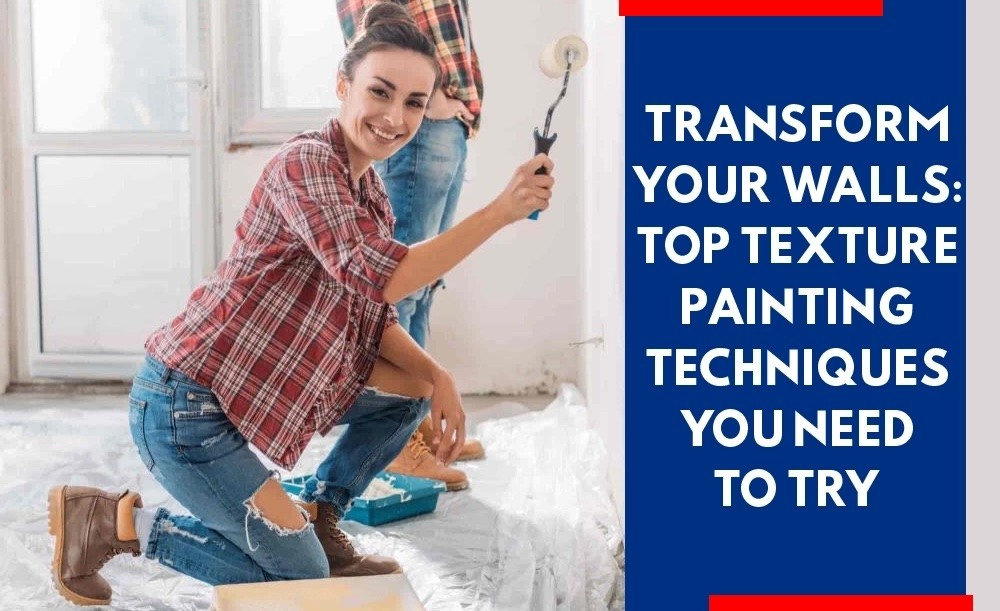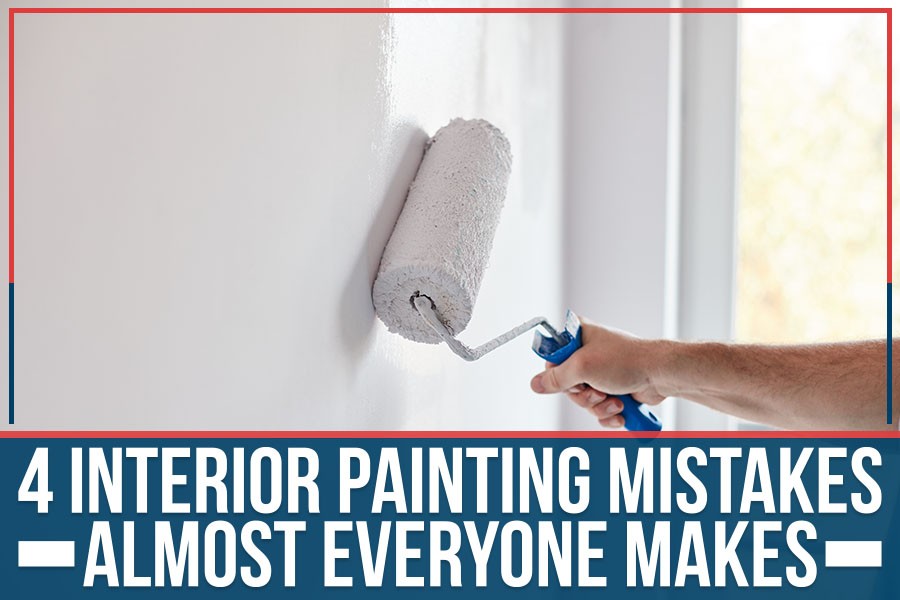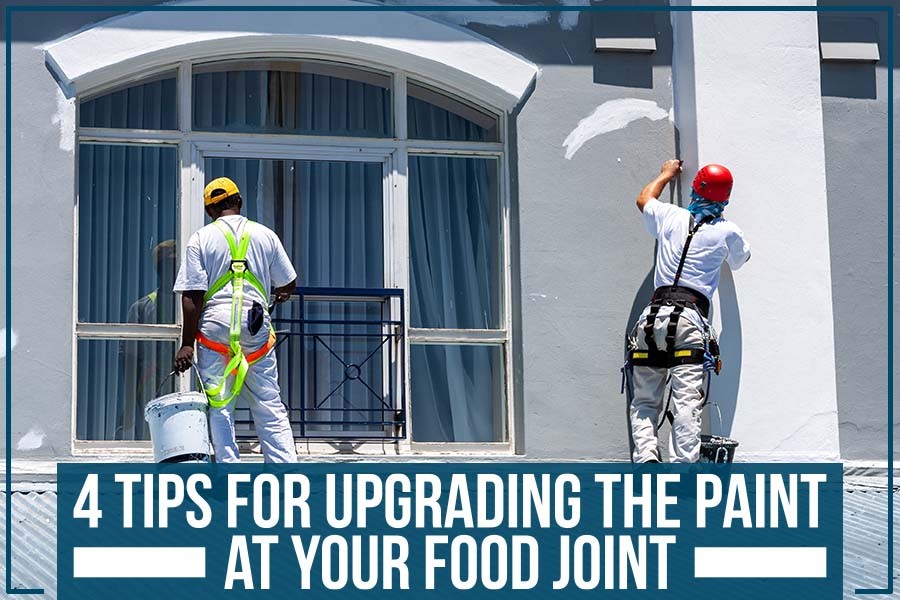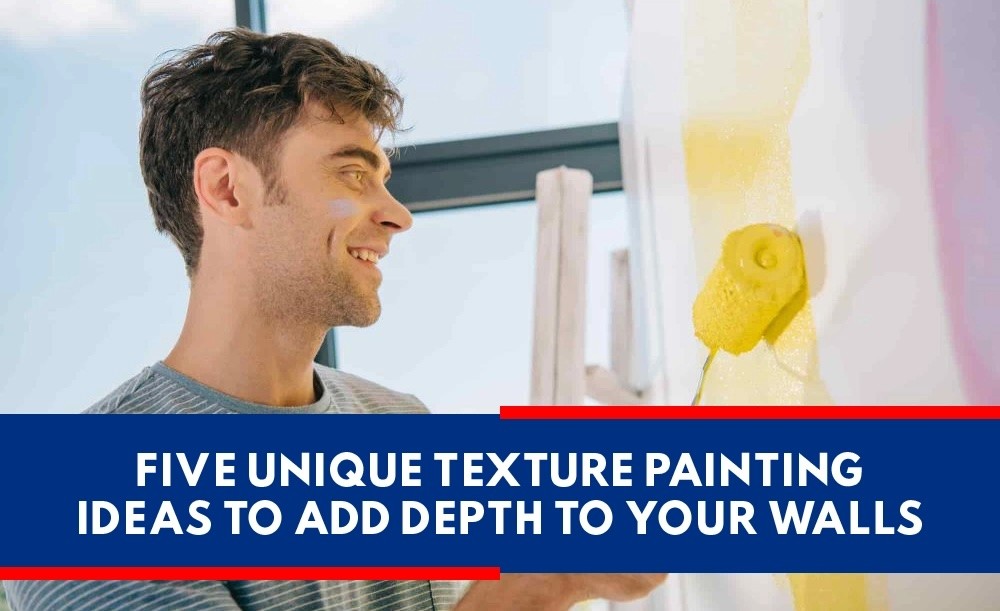4 Interior Painting Mistakes Almost Everyone Makes
Transform Your Walls: Top Texture Painting Techniques You Need to Try

Table of Contents
Our walls are the backdrop of our homes and often serve as blank canvases that can be transformed with a few simple steps. But why settle for plain paint when you can add texture to your walls? Texture painting techniques have been around for centuries, but modern approaches make it easier than ever to change the look of any room in no time. In this article, we'll explore some of the top texture painting techniques you need to try if you want to transform your walls from ordinary to extraordinary!
Adding texture to interior walls is a great way to add interest and style to any space. With so many options from subtle finishes to bold designs, the possibilities are endless. However, if you want results that are up to professional standards, it is best to call in a professional painting contractor. With their expertise and experience, you can be sure that your textured finish will be of the highest quality and look stunning for years to come.
No matter what kind of finished look you're aiming for - whether it's rustic charm or sleek minimalism - understanding how each technique works will help ensure that your project turns out exactly as you envisioned. So let’s dive right in: here is an overview of the top texture painting techniques that are sure to give your home the wow factor!
Paint rollers can be used to easily add texture and depth to walls – creating unique patterns ranging from subtle swirls to bold stripes. To get the best results, make sure to pick up a paint roller that is designed for textured surfaces, then spread tarps or newspaper over furniture and floors beneath where you plan to apply the paint.
Ready to create interesting textures with a simple paint roller? Start by dipping the roller into acrylic or oil paint and applying it across the desired area while maintaining consistent pressure. The motion should be done horizontally until all sections are covered with a thin layer of paint. To ensure an even texture, use a painting knife before the paint has completely dried, as this will help create unique patterns and designs. With practice and patience, you'll soon become adept at creating amazing textures – perfect for transforming dull walls into vibrant masterpieces!
Stencil painting is a great way to add interesting texture and interest to walls! To get started, use a stencil brush or roller to apply the base coat of paint in whatever color you choose. Once it has dried completely, place the stencil onto the surface and secure it with painter's tape. Then, dip your chosen brush into the stencil paint and begin dabbing over the cut-out sections of the design until all areas are covered evenly. Moreover, for an even more textured look, consider adding texture paste or other materials around or inside each section to create a unique effect. With patience and practice, you can create a beautifully painted mural that adds character and style to any room!
When finished, slowly remove the stencil from the wall while still ensuring that no paint gets on other surfaces. You may need to go back and touch up any areas where bleeding occurred during application but once done, stand back and admire your work! With so many different shapes and sizes available, there's no limit to what you can create with stencils – they're ideal for adding dynamic patterns to otherwise plain walls without too much effort.
If you're looking to create an eye-catching wall with a bit of texture, sponging is the way to go. This technique uses specially designed sponge paint rollers or brushes, as well as natural sponges for more intricate designs. Start by rolling on your base coat in whatever color you choose and letting it dry thoroughly before beginning the next step. Then, dip either your roller or brush into some contrasting colored paints and apply over the surface in random circular motions – this will help build up the layers of color and give off an interesting effect. If desired, you can also use a real sponge dipped in different colors for even more detail - be creative!
Ready to create a unique look for your walls? Texture painting techniques make it easy to express yourself through creative designs. Start by selecting the right material - choose acrylic paint for its fast-drying properties and interesting textures. Dip the palette knife into the paint and make thick strokes on your wall, layering the strokes to create an interesting design. You can even try adding sponging or scumbling – another common technique used with this type of painting. With practice, you'll be able to create stunning textures that will transform any room in no time at all!
If you're looking for a unique and interesting texture on your walls, then crackle effects are the perfect solution! To get started, make sure to prepare the wall surface by cleaning and removing any dust or dirt. Mix up some joint compound according to package instructions and use either a drywall texture sprayer or trowel to apply it over the surface. Allow this first layer of mud to dry before adding another - if desired, you can create different patterns on top of the dried mud such as swirls or lines.
Give everything two days to settle before starting the painting process with an acrylic-based paint that will produce great crackling results. Apply several thin coats in multiple layers and watch as they create interesting textures when light hits them at certain angles - you’ll be sure to achieve beautiful depth and dimension within the cracks in no time at all!
If you're looking to create interesting textures and add a dramatic effect, sponge rolling and scumbling are the perfect techniques to explore. Start by laying down drop cloths over the entire work area before mixing a few tablespoons of glaze into your paint. Attach a clean roller cover onto your paint roller and dip it in the mixture before applying it to the wall – remember to keep things light and airy for the best results! Once done, use a dampened sea sponge cut into small pieces (or as desired) to lightly dab onto the surface until you achieve your desired texture - try using different sponges to create various textures and create interesting textures. With these tips in hand, you’ll have no trouble creating beautiful designs on your walls in no time at all!
Here's a list of interesting sponge painting ideas:
• Natural Patterns: Use natural objects such as shells, leaves, or stones to create unique patterns on your walls.
• Contrasting Colors: Create contrast between two colors by blending them in varying degrees on top of the painted surface.
• Decorative Embellishments: Add decorative elements like sequins or glitter for added dimension and sparkle.
With these tips in hand, there's no limit when it comes to creating beautiful textured effects for your walls!
For the perfect textured surface that will capture everyone's attention, try creating textured rags swirls! Start by selecting a fabric such as muslin or burlap and cutting it into strips or pieces according to what shape you'd like the design to be in. Follow this up by applying one layer of oil-based primer onto the wall and letting it dry. Then, take a paint knife and brush and start layering thick paint onto the primed surface - use different textures and materials for an added effect that will help create interesting textures. With these tips in hand, you’ll have no trouble creating beautiful designs on your walls using this technique in no time at all!
Once everything is ready, dip your rag material into a mixture of water and acrylic craft paints - use contrasting colors for added drama! When applying them onto the walls, make sure to create a swirling effect by gently dragging each piece across the surface until you get your desired look.
Finish things off by adding some metallic accents using gold leafing if desired.
By taking advantage of different materials and contrasts between light and dark tones, you can easily transform any room into a work of art!
Ready to spruce up your walls with texture painting techniques? One of the best materials to use is acrylic paint - it dries quickly and creates an interesting texture. Dip a paint roller or brush into acrylic paints and apply it horizontally, ensuring consistent pressure throughout. To achieve unique patterns and designs, try using a paint knife before the paint has completely dried. With time and patience, you'll be able to create stunning textures - perfect for transforming dull walls into vibrant masterpieces!
No matter which technique you choose – whether it’s adding crackle effects or using stencils – texture painting is an easy and affordable way to give your home a fresh new look without breaking the bank. So why not experiment with one of these top texture painting techniques today?
Author

Mason Marquis, raised in Newport Beach, California, and Austin, Texas, amalgamated his experiences from both vibrant cities in his journey. His academic pursuit in Economics and Psychology at the University of North Texas (UNT) led to the founding of Spray Tex Painting. This venture was not just a business for Mason but a practical application of his academic learnings, particularly the integration of economic concepts and psychological understanding. Spray Tex Painting, under Mason's direction, transcends being merely a painting service; it's a platform where client visions are realized through dedication and creativity.
Related Articles

4 Interior Painting Mistakes Almost Everyone Makes

4 Tips For Upgrading The Paint At Your Food Joint

5 Unique Texture Painting Ideas to Add Depth to Your Walls

A Comprehensive Approach: Unveiling the Whole-house Paint Services